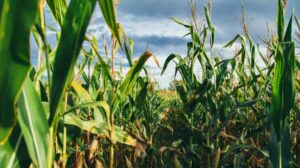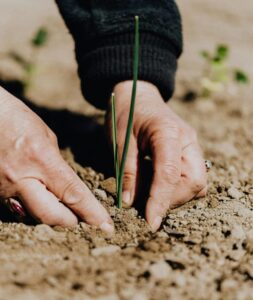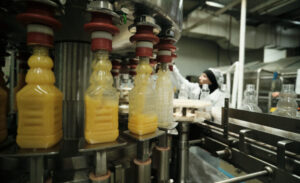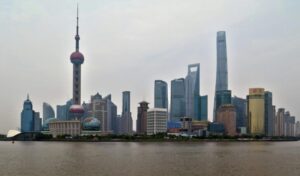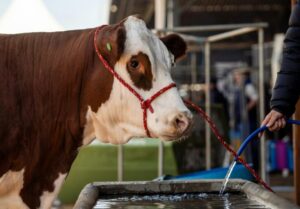Introduction
In the earlier editions of our printed book, this page was titled “Urban agriculture”. However, urbanisation is an important issue all on its own, and urban agriculture takes place within that context.
“Of course the country needs a rural strategy, but the future of South Africa is urban and the relationship between effective urbanisation and economic growth is very strong”, Ann Bernstein, CEO of the Centre for Development and Enterprise (CDE), has said. Cities are the drivers of economic growth.
Issues around urbanisation include the disproportionate price the poor pay in commuting time and transport costs; safety; infrastructure and sanitation; accommodation; health services; and food security.
Urban agriculture won’t fix all that goes wrong in cities, yet it does have a part to play. It provides food security, entrepreneurial activity, “social capital” and protection for women (Olivier, 2017).
Find the publications and reports at www.sacities.net, website of the South African Cities Network (SACN).
Urban agriculture
Urban agriculture can be defined shortly as the growing of plants and the raising of animals within and around cities.
The most striking feature of urban agriculture, which distinguishes it from rural agriculture, is that it is integrated into the urban economic and ecological system. Such linkages include the use of urban residents as labourers, use of typical urban resources (like organic waste as compost and urban wastewater for irrigation), direct links with urban consumers, direct impacts on urban ecology (positive and negative), being part of the urban food system, competing for land with other urban functions, being influenced by urban policies and plans, etc.
- Urban agriculture may take place in locations inside the cities (intra-urban) or in the peri-urban areas. The activities may take place on the homestead (on-plot) or on land away from the residence (off-plot), on private land (owned, leased) or on public land (parks, conservation areas, along roads, streams and railways), or semi-public land (schoolyards, grounds of schools and hospitals).
- Urban agriculture includes food products, from different types of crops (grains, root crops, vegetables, mushrooms, fruits) and animals (poultry, rabbits, goats, sheep, cattle, pigs, guinea pigs, fish, etc.) as well as non-food products (like aromatic and medicinal herbs, ornamental plants, tree products, etc.). or combinations of these. Often the more perishable and relatively high-valued vegetables and animal products and by-products are favoured.
- In most cities in developing countries, an important part of urban agricultural production is for self-consumption, with surpluses being traded. However, the importance of the market-oriented urban agriculture, both in volume and economic value, should not be underestimated (as will be shown later). Products are sold at the farm gate, by cart in the same or other neighbourhoods, in local shops, on local (farmers) markets or to intermediaries and supermarkets. Mainly fresh products are sold, but part of it is processed for own use, cooked and sold on the streets, or processed and packaged for sale to one of the outlets mentioned above.
Urban agriculture is an integral part of the urban system.
Source: adapted from notes on the RUAF Foundation website, www.ruaf.org
International business environment
SDG (Sustainable Development Goals) 11 is Sustainable cities and communities. Find the latest The Sustainable Development Goals Report which measures progress in achieving the Sustainable Development Goals (SDGs) by 2030.
Some role players
- African Centre for Cities at the University of Cape Town, http://africancentreforcities.net
- The African Food Security Urban Network (AFSUN) was founded in 2008 to address the crisis of food insecurity in Africa’s rapidly-growing towns and cities. See www.afsun.org.
- City Farmer, Canada’s Office of Urban Agriculture, www.cityfarmer.info
- Find the Green Cities Initiative option at www.fao.org/themes/en/, website of the UN’s Food & Agriculture Organisation (FAO).
- Future Earth, “Research. Innovation. Sustainability”. Visit www.futureearth.org
- Find the “Urban” option at www.gdrc.org, website of the Global Development Research Center
- Rockefeller Foundation‘s 100 Resilient Cities (100RC) programme, www.100resilientcities.org
- Find the USDA‘s Urban Agriculture Tool Kit at www.usda.gov/sites/default/files/documents/urban-agriculture-toolkit.pdf
- The Urban Farming Guys, a Non Profit Organisation – http://theurbanfarmingguys.com
National strategy and government contact
National Planning Commission (NPC) www.nationalplanningcommission.org.za/Pages/default.aspx About 30-million South Africans live in urban areas, but by 2030, an additional 11-million would move to cities – with the urban rate increasing to 70% of all South Africans. Where these people would be housed? Where they would work? What water they would use and what kind of transport they would use (among other things)? The NPC, responsible for developing a long term vision and strategic plan for South Africa, looked at these issues and produced the National Development Plan (NDP).
Department of Cooperative Governance and Traditional Affairs (COGTA) www.cogta.gov.za Cabinet adopted the Integrated Urban Development Framework (IUDF) in 2016, which sought to foster a shared understanding across government and society about how best to manage urbanisation and achieve the goals of economic development, job creation and improved living conditions for South Africans. See https://iudf.co.za.
Department of Agriculture Find Guidelines for Urban and peri-urban animal agriculture, at www.nda.gov.za. Contact details all directorates are available on the website.
Others
- Department of Basic Education www.education.gov.za The National School Nutrition Programme (NSNP) encourages nutritious means and establishing food gardens
- Department of Science, Technology & Innovation www.dsti.gov.za The White Paper on Science, Technology and Innovation included “Rapid urbanisation” as one of four examples of megatrends that bring both opportunities and threats.
- Financial and Fiscal Commission www.ffc.co.za Find the many policy briefs like Towards Sustainable Urban Development Assessing the IUDF and CSP, Responding to South Africa’s Urban Development Challenge and Funding and Policy Framework for Supporting Urban Informal Employment
- South African Local Government Association (SALGA) www.salga.org.za
- DST-NRF Centre of Excellence in Food Security http://foodsecurity.ac.za
Role players
View the Premium Listings below (scroll down or click on “Premium Listings” on the Table of Contents to the right).
Further reference:
- Find the links to the cities at www.sacities.net – Buffalo City, Cape Town, Cape Town, Ekurhuleni, Ethekwini, Johannesburg, Mangaung, Msunduzi, Nelson Mandela Metropole and Tshwane.
Websites and publications
Visit the websites listed earlier on this page.
- Find out about the publications available from the Resources Centre on the Urban Agriculture and Food Security (RUAF) Foundation website at www.ruaf.org, which include the Urban Agriculture Magazine.
- Open Source Ecology teaches people to complete modern sustainable projects like aquaponics. Online courses can be taken from anywhere in the world. Take a look at http://opensourceecology.org.
- Centre for Development and Enterprise. 2023. SA’s future will be decided in our cities. Available at www.cde.org.za/south-africas-future-will-be-decided-in-our-cities/
- Centre for Development and Enterprise. 2020. Building better cities: a new approach to housing and urban development. Available at www.cde.org.za/building-better-cities-a-new-approach-to-housing-and-urban-development-2/
- Calthorpe, P. 2017, August 31. “7 principles for building better cities”. TED. Available at www.youtube.com/watch?v=IFjD3NMv6Kw
- Swanepoel, J.W., Van Niekerk, J.A. & D’Haese L. 2017. “The socio-economic profile of urban farming and non-farming households in the informal settlement area of the Cape Town Metropole in South Africa”. South African Journal of Agricultural Extension 45(1). Available at www.scielo.org.za/scielo.php?script=sci_arttext&pid=S0301-603X2017000100012
- Griffiths J. 2015. Jane’s Delicious Urban Gardening. Johannesburg: Jonathan Ball.
- Joubert, Leonie. 2012. The Hungry season: Feeding Southern Africa’s Cities. Johannesburg: Pan Macmillan South Africa.
- Mougeot. L.J.A. 2005. Agropolis: The Social, Political, and Environmental Dimensions of Urban Agriculture. Ottawa: IDRC. Available at www.idrc.ca/en/book/agropolis-social-political-and-environmental-dimensions-urban-agriculture
- The Urban Homestead http://urbanhomestead.org Turning an urban plot into an extraordinary example of homesteading in the city.
- Find the articles by David Thorpe at www.smartcitiesdive.com/ex/sustainablecitiescollective/how-cities-will-feed-their-citizens-future/439071/
Urban farming – some articles
- Read the Agribook blogs “Growing African vegetables on buildings can save space and feed cities – new study” and “Farms in cities: new study offers planners and growers food for thought“.
- Reporter. 2025, April 10. “Urban farming reform key focus at hunger summit in Gauteng”. Food for Mzansi. Available at www.foodformzansi.co.za/urban-farming-reform-key-focus-at-hunger-summit-in-gauteng/
- Kanosvamhira TP. 2025, January 26. “Urban food gardens produce more than vegetables, they create bonds for young Capetonians – study”. The Conversation. Available at https://theconversation.com/urban-food-gardens-produce-more-than-vegetables-they-create-bonds-for-young-capetonians-study-243500
- Reporter. 2024, May 1. “Township agriculture programme launched to address food insecurity”. SA News. Available at www.sanews.gov.za/south-africa/township-agriculture-programme-launched-address-food-insecurity
- Reporter. 2022, November 23. “Redefine launches rooftop HandPicked CityFarm at Kenilworth Centre”. Bizcommunity. Available at www.bizcommunity.com/Article/196/567/233813.html
- Sikhakhane N. 2022, October 11. “Urban farms ‘could be a real game-changer in the SA landscape’”. Daily Maverick. Available at www.dailymaverick.co.za/article/2022-10-11-urban-farms-could-be-a-real-game-changer-in-the-sa-landscape/
- Majavu A. 2022, June 20. “Urban gardens one solution to corruption and hunger”. New Frame. Available at www.newframe.com/urban-gardens-one-solution-to-corruption-and-hunger
- Sol’s Kitchen. 2021, June 2. “Why urban farming in South Africa has such great growth potential”. Available at https://solsfoods.com/why-urban-farming-in-south-africa-has-such-great-growth-potential/
General urbanisation – some articles
- Bloomberg. 2025, April 4. “Plan to save South Africa’s cities”. Daily Investor. Available at https://dailyinvestor.com/south-africa/84076/plan-to-save-south-africas-cities
- Magidimisha-Chipungu H. 2023, January 19. “Why are floods in South Africa’s KwaZulu-Natal so devastating? Urban planning expert explains”. The Conversation. Available at https://theconversation.com/why-are-floods-in-south-africas-kwazulu-natal-so-devastating-urban-planning-expert-explains-221285
- Pillay K. 2023, June 27. “Report: Cities are the best hope for turning SA around”. IOL. Available at www.iol.co.za/news/politics/report-cities-are-the-best-hope-for-turning-sa-around-924ef9d6-f95f-4cee-b2cc-542001e87501
- Jacobs S. 2023, June 18. “South African cities getting crushed by African peers”. Daily Investor. Available at https://dailyinvestor.com/world/20319/south-african-cities-getting-crushed-by-african-peers
- Burger S. 2022, April 22. “Cities need holistic approach to inclusive, sustainable development, SACN says”. Engineering News. Available at www.engineeringnews.co.za/article/sacn-says-cities-need-holistic-approach-to-inclusive-sustainable-development-2022-04-22
- Areff, M. 2019, July 6. “OPINION: SA needs smart cities, just not what you envisage”. IOL. Available at www.iol.co.za/business-report/opinion/opinion-sa-needs-smart-cities-just-not-what-you-envisage-28716340
- Reboredo, R. & Brill, F. 2019, March 5. “What a failed Johannesburg project tells us about mega cities in Africa”. The Conversation. Available at https://theconversation.com/what-a-failed-johannesburg-project-tells-us-about-mega-cities-in-africa-112420
- Editorial. 2018, October 31. “SA’s cities are ticking urban time bombs”. The Citizen. Available at https://citizen.co.za/news/opinion/opinion-editorials/2030097/sas-cities-are-ticking-urban-time-bombs/
- Reporter. 2018, October 15. “Nel builds case for interlinked urban-rural development”. SA News. Available at www.sanews.gov.za/south-africa/nel-builds-case-interlinked-urban-rural-development
- Miller, J. 2016, June 23. “Divided cities: South Africa’s apartheid legacy photographed by drone”. The Guardian. Available at www.theguardian.com/cities/gallery/2016/jun/23/south-africa-divided-cities-apartheid-photographed-drone
International – urban agriculture
- Read about the 5th URBAN AGRI World 2024 event at https://urbanagrisummit.magentaglobalevents.com/
- Jaynes CH. 2023, February 7. “Urban Gardening 101: Everything You Need to Know”. EcoWatch. Available at www.ecowatch.com/urban-gardening-guide.html
- Benson R. 2019, August 18. “Food after oil: how urban farmers are preparing us for a self-sufficient future”. The Guardian. Available at www.theguardian.com/cities/2019/aug/18/food-after-oil-how-urban-farmers-are-preparing-us-for-a-self-sufficient-future
- Poulter, S. 2019, March 6. “Supermarkets are growing fresh produce in ‘pick your own’ aisles”. IOL. Available at www.iol.co.za/lifestyle/food-drink/drink/supermarkets-are-growing-fresh-produce-in-pick-your-own-aisles-19646300
- Fry, S. 2018, August 17. “The world’s first floating farm making waves in Rotterdam”. BBC News. Available at www.bbc.com/news/business-45130010
- Phillips, G. 2018, June 26. “Innovative, sustainable aquaponics production in Berlin”. Farmer’s Weekly. Available at www.farmersweekly.co.za/agri-business/agribusinesses/innovative-sustainable-aquaponics-production-berlin/
- Aquaponics is “an emerging urban farming trend that’s ideal for big cities”. Read the article “Three Aquaponic farms in Brooklyn Killing It” at www.ecowatch.com/3-aquaponic-farms-in-brooklyn-killing-it-1891176412.html.
- Obordo, R. 2018, June 7. “‘Fresh, free and beautiful’: the rise of urban gardening”. The Guardian. Available at www.theguardian.com/world/2018/jun/07/fresh-free-and-beautiful-the-rise-of-urban-gardening
- Reporter. 2018, February 2. “Nigerian entrepreneur: ‘We’re farming in a shipping container'”. BBC Business. Available at www.bbc.com/news/av/business-42919553/nigerian-entrepreneur-we-re-farming-in-a-shipping-container
- Branson, A. 2017, September 9. “Grow Dwarf Fruit Trees Add Variety and Value to your Food Garden”. Wilderners. Available at http://wilderners.com/grow-dwarf-fruit-trees/
- Mellino, C. 2015, September 28. “Former WWII Bomb Shelter Now World’s First Underground Farm”. EcoWatch. Available at www.ecowatch.com/former-wwii-bomb-shelter-now-worlds-first-underground-farm-1882102891.html
International – general urbanisation
- Spooner M, Haas A, Jones P & Adedini S. 2024, November 5. “Africa’s cities are growing chaotically fast, but there’s still time to get things right – insights from experts”. The Conversation. Available at https://theconversation.com/africas-cities-are-growing-chaotically-fast-but-theres-still-time-to-get-things-right-insights-from-experts-242417
- World Economic Forum. 2024, May 23. Nature positive: Guidelines for the transition in cities. Available at www.polity.org.za/article/nature-positive-guidelines-for-the-transition-in-cities-2024-05-23
- Goldin I. 2023, June 22. “Cities are central to our future – they have the power to make, or break, society’s advances”. The Conversation. Available at https://theconversation.com/cities-are-central-to-our-future-they-have-the-power-to-make-or-break-societys-advances-207317
- Haas A. 2023, June 19. “African cities and climate change: the real debate is who should pay to fix the problem”. The Conversation. Available at https://theconversation.com/african-cities-and-climate-change-the-real-debate-is-who-should-pay-to-fix-the-problem-207634
- Read our blog “Africa’s free trade area offers promise for cities – but only if there’s investment” (2022, December 28).
- Mughogho D. 2022, June 8. “OPINION| Africa’s urbanisation is an opportunity to create great cities”. Mail & Guardian. Available at https://mg.co.za/opinion/2022-06-08-opinion-africas-urbanisation-is-an-opportunity-to-create-great-cities/
- Robinson J. 2020, August 4. “Biodiversity loss could be making us sick – here’s why”. The Conversation. Available at https://theconversation.com/biodiversity-loss-could-be-making-us-sick-heres-why-143627
- Dobraszczyk, P. 2019. Future Cities: Architecture and the Imagination. London: Reaktion Books.
- Macdonald F. 2019, October 16. “The ‘Glasgow effect’ implies cities make us sad. Can the city prove the opposite?” The Guardian. Available at www.theguardian.com/cities/2019/oct/16/urban-living-makes-us-miserable-this-city-is-trying-to-change-that
- Haas, ARN. 2019, May 15. “Getting the right institutions in place to run Africa’s cities efficiently”. The Conversation. Available at https://theconversation.com/getting-the-right-institutions-in-place-to-run-africas-cities-efficiently-116084
- FRANCE 24 English. 2019, April 26. “How smart are cities?” Available at www.youtube.com/watch?v=UlYh2u3EG4s
- UN Environment. 2019, March 27. “First ever Cities Summit calls for integrated approach to urban infrastructure”. Available at www.unenvironment.org/news-and-stories/story/first-ever-cities-summit-calls-integrated-approach-urban-infrastructure

